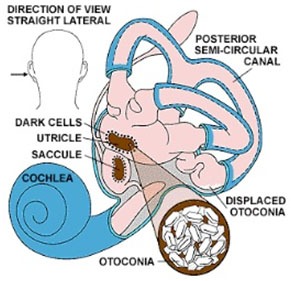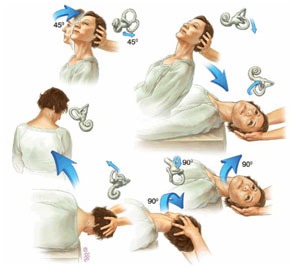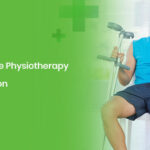BPPV (Benign Paroxysmal Positional Vertigo)
BPPV IS characterized by episodes of sudden and severe vertigo (dizziness) with the head movements while turning to sides or getting of the bed. Any head movement can trigger vertigo or dizziness.

The ear rocks within the ear appear in the semicircular canal which triggers the sensation of vertigo. It usually affects one ear. The symptoms may come and go with periods of no symptoms at all.
Vertigo is basically a symptom rather than a disease. Vertigo refers to the sensation of spinning or whirling that occurs as a result of a disturbance in the inner ear i.e. the vestibular system or balance organ. It can be described as a feeling of dizziness, lightheadedness, faintness, or unsteadiness.
Reasons for Vertigo
Vertigo usually occurs as a result of a disorder in the vestibular system (structures of the inner ear, the vestibular nerve, brainstem, and cerebellum).
The vestibular system integrates the sensory stimuli and orients the static and moving surrounding objects in visual focus with movement of the head or the person as a whole. With the head movement, the fluid in the semicircular canal (labyrinth apparatus) moves to stimulate the nerve fibers present in it, this integrates the movement information. The labyrinth then transmits movement information to the vestibular nerve and the vestibular nerve carries the information to the brainstem and cerebellum (areas of the brain that control balance, posture, and motor coordination).

The ear rocks or ‘OTOCONIA’ are calcium carbonate crystals usually present in saccule or utricle (inner ear components). Injury or degeneration of the utricle allows the ear rocks to appear in the semicircular canal. This results in an abnormal sensation of head movement and vertigo appear.
The ‘Ear Rocks’ can dislodge because of –
- Idiopathic i.e. unknown cause
- Head or ear injury.
- Ear surgery or ear infection, such as otitis media.
- Degeneration of the inner ear structures.
- Vestibular neuritis (viral infection of the inner ear).
- Meniere’s disease (a disorder of the inner ear).
- Some types of minor strokes.
Symptoms of Vertigo
The symptoms of BPPV include:
- Sudden episodes of violent vertigo.
- Dizziness and/or nausea.
- Movements of the head trigger vertigo.
- Vertigo may last for few seconds to more than a min.
- Nystagmus – Eyes may drift and flicker uncontrollably.
Diagnosis:
An ENT specialist or a physiotherapist specialized in vestibular rehabilitation can easily distinguish between inner ear-related vertigo and other forms of dizziness.
Treatment:
After assessing and confirming BPPV, a vestibular rehab specialist physiotherapist uses specific techniques to relocate the “ear rocks” to an area in the inner ear that doesn’t stimulate the feelings of dizziness or vertigo.
The vestibular rehabilitation aims at relocating the ear rocks, improving proprioception and balance, and gaze fixation exercises.
If the techniques of vestibular rehab are performed correctly more than 90% of cases recover within few sittings of physiotherapy.

Other Treatment Options
As the vertigo is due to the presence of ear rocks within the vestibular canal, the only relocation can settle the symptoms. However, few drugs can be prescribed by an ENT specialist or a physician to mask the BPPV symptoms.
Contact PAIN FREE PHYSIOTHERAPY CLINIC for vestibular rehabilitation.
BPPV Surgery
If the symptoms continue for more than 12 months, an operation may be needed. The risks of this type of operation include hearing loss. The ENT surgeon is the best person to discuss this option.





